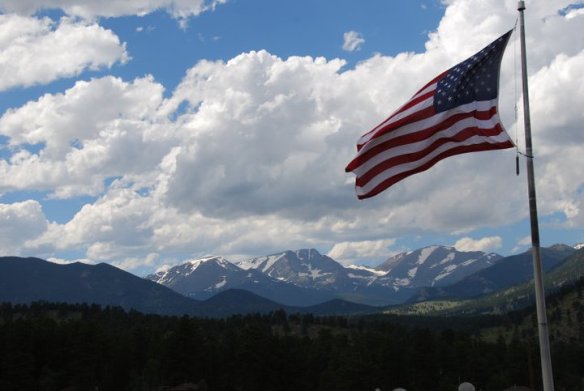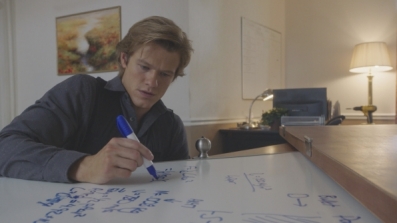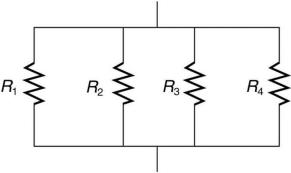

As nerd stuff goes, biology has always been more my speed than physics. When my group in AP bio got to dissect a fresh frozen elk heart instead of a preserved sheep heart, I was positively overjoyed. I remember so clearly the size (almost as big as my head) and weight of it, the texture of the muscle. I can still see the valves, the heartstrings, and coagulated blood in the right and left atria. So it kind of surprised me when I thought of a physics metaphor for our politics today. I, the daughter of a PhD in applied mechanics, earned the lowest grade of my college career in first quarter physics.
Like many science nerd adolescents of the 80’s, I looked forward to new episodes of “MacGyver” every week. The handsome, mullet-sporting Richard Dean Anderson always jerry-rigged his way out of life-threatening situations using everyday chemistry and such. How fun that my kids can now enjoy the same drama with the CBS “MacGyver” reboot, starring Lucas Till. We bond over TV, my kids and I.

In the “Chisel” episode, Mac and his team find themselves barricaded inside a US Embassy, under attack by terrorists. On a white board, he calculates how many inches of paper to place in front of the windows to stop incoming machine gun bullets—it’s 8 in this case. [As an aside, the Mythbusters showed that paper is a plausible form of body armor.] This got me thinking: one sheet of paper, so thin and flimsy, is easily shredded. But layered in redundance, it can stop a barrage of deadly bullets. It feels a lot like our national political activism since last November.
Women, scientists, environmentalists, educators, people of color, the LGBTQ community, Native Americans, writers, actors, physicians, patients, religious groups, law enforcement, legislators, and the press—We have all found our legs and our voices; we have stood and proclaimed not only our opposition to 45, but our commitment to our core values of inclusion, equality, respect for the planet, and respect for one another. I submit that we are resistors in series.
 You may recall from physics class that when resistors are placed end to end in an electrical circuit, their total resistance is the sum of their individual impedance units. As the current passes through one resistor, it encounters the next one, and the next, one after another, slowing its progress. I like to see today’s activist groups in this way, each contributing several layers to the dense, thick paper barricade at the windows of democracy as we know it, defending it against attack. And the more we can stand united, supporting one another, the stronger we will be. Could our resistance even be exponential, rather than simply additive?
You may recall from physics class that when resistors are placed end to end in an electrical circuit, their total resistance is the sum of their individual impedance units. As the current passes through one resistor, it encounters the next one, and the next, one after another, slowing its progress. I like to see today’s activist groups in this way, each contributing several layers to the dense, thick paper barricade at the windows of democracy as we know it, defending it against attack. And the more we can stand united, supporting one another, the stronger we will be. Could our resistance even be exponential, rather than simply additive?
Tyrants and authoritarians divide to conquer–they like resistors in parallel, where the total impedance is actually a fraction of each individual unit’s resistance. By pitting each group against every other, a despot can trample them each/all with ease, and they might never see it coming—the same voltage directed across multiple, isolated resistors transforms them into conductors of the oppressor’s will.
Perhaps this was our orientation prior to the last election. We each had our pet causes, for which we felt varying degrees of personal activism. We saw ourselves as detached, benignly unconnected. But as we have witnessed a progressive threat marching against everything that we care about, a shared, collective threat, a new current has sparked. Perhaps this mutual unease has reorganized us to connect in succession, to close ranks.
I was reminded of this idea when I read this piece by Charles M. Blow in the New York Times. He posits that “America regularly experiences bouts of regression, but fortunately, it is in those regressive periods that some of our greatest movements and greatest voices… found their footing.” Then I came across another article from The Atlantic, suggesting that even our legislators may be reorienting themselves into more serial, additive connectedness:
In hindsight, the Democrats’ decision to not allow partisanship to subsume collegiality or compassion, to cheer McCain along with their Republican colleagues, to embrace a friend even as he cast a decisive vote to move forward with a bill they despised, no longer seems naive. “I hope we can again rely on humility, on our need to cooperate, on our dependence on each other to learn how to trust each other again and by so doing better serve the people who elected us,” McCain had said in his speech.
Had Democrats met that vote by attacking McCain, he might not have voted no [on the Senate’s ‘skinny repeal’ of the Affordable Care Act] last night. He might not have been so immune to the entreaties of his colleagues. He might not have resisted the arm-twisting of the president who never spent a day in public service before winning an election, who mocked him so cruelly two years ago. He might have decided against casting a vote to derail his own party’s seven-year crusade to dismantle the Affordable Care Act, a goal he still endorses.
I know my analogy vastly oversimplifies our political landscape. Still, it comforts me. I feel particularly focused on healthcare today, and I like to think that even if healthcare is not someone else’s chief concern, she will stand up with me when our healthcare system is under attack, just like I will rise with her in defense of our natural treasures, etc. We stand, shoulder to shoulder, hand in hand, to resist and defend. This vision of unity and cohesion is my hope and aspiration, not just now, but for generations to come.

Amen! Hear hear! Yes, this! 🙂
LikeLiked by 1 person
Thanks Tim! 😊
LikeLiked by 1 person
Pingback: Just Because They're Telling Us We're Divided Doesn't Make It True | Triffany Hammond
Pingback: I Love Nerd Humor | Healing Through Connection
Pingback: Dr. Jerkface In Context—Healing the Patient-Physician Relationship | Healing Through Connection